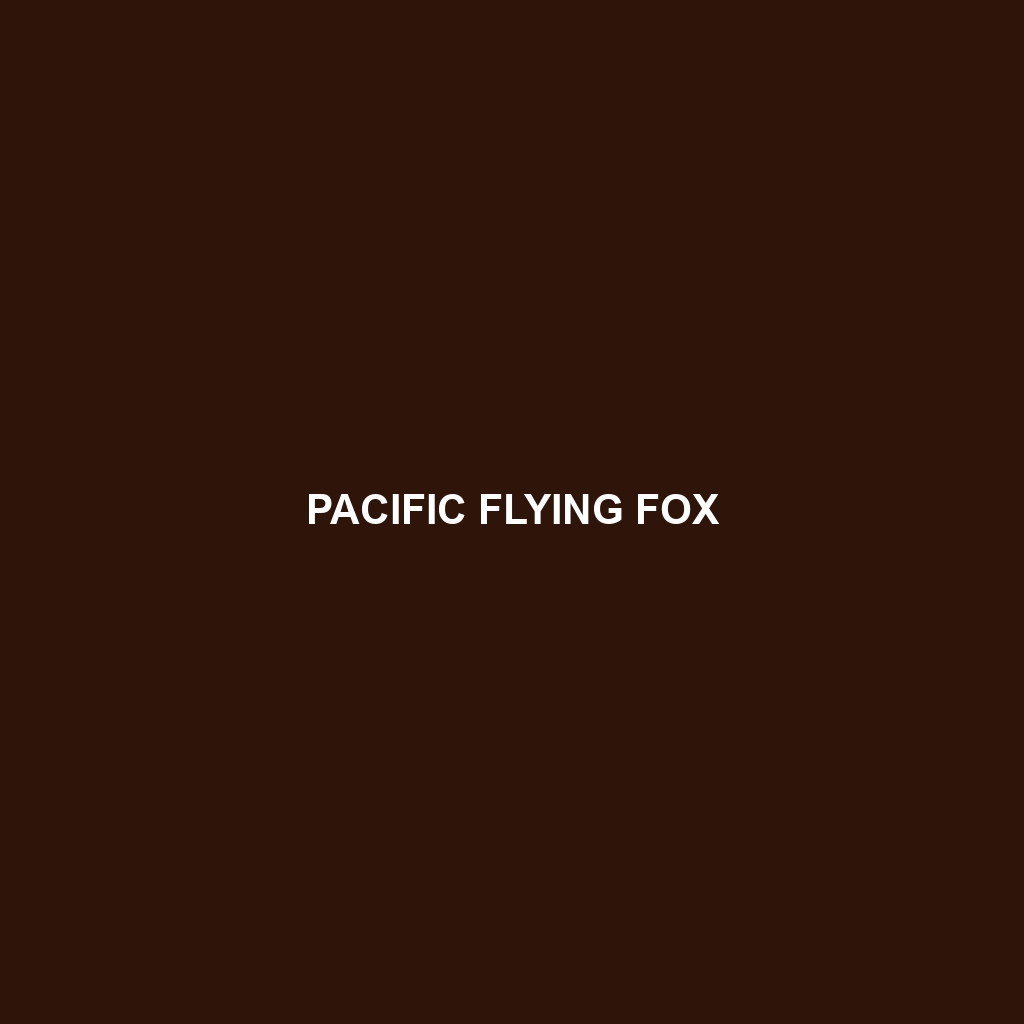Pacific Flying Fox (Pteropus pelagicus)
Common Name: Pacific Flying Fox
Scientific Name: Pteropus pelagicus
Habitat
The Pacific Flying Fox primarily inhabits tropical forests and mangrove ecosystems across various Pacific Islands, including Palau, Micronesia, and Fiji. These bats thrive in areas rich in fruit-bearing trees, as they rely heavily on these environments for their survival. Their habitats often include coastal regions and lowland forests that provide roosting sites and ample food sources.
Physical Characteristics
The Pacific Flying Fox is one of the largest bat species, with a wingspan that can reach up to 1.5 meters (5 feet) and a body length of approximately 25-30 cm (9.8-11.8 inches). They have distinctive golden-brown fur, which can appear almost orange in sunlight, contrasting with their darker wings and face. Their large, expressive eyes and long snouts contribute to their unique appearance, making them a remarkable sight in their natural habitats.
Behavior
Pacific Flying Foxes are primarily nocturnal and exhibit social behaviors by roosting in large colonies during the day. They are known for their playful interactions, which often include hanging upside down and grooming each other. Their flying techniques, which involve gliding rather than flapping, allow them to cover significant distances in search of food, primarily at night.
Diet
The diet of the Pacific Flying Fox mainly consists of fruits, nectar, and flowers, with a particular preference for figs and other tropical fruits. They are essential pollinators and seed dispersers in their ecosystems, making them crucial for the health of their habitats. Their feeding habits help maintain the biodiversity of tropical forests, as they facilitate the growth of various plant species.
Reproduction
Pacific Flying Foxes typically breed once a year, with mating occurring in the late summer. After a gestation period of about five months, females usually give birth to a single offspring. The young are cared for in the safety of large colonies, where they learn to fly and forage for food alongside their mothers.
Conservation Status
The Pacific Flying Fox is currently listed as vulnerable on the IUCN Red List due to habitat loss, hunting, and natural disasters affecting their populations. Conservation efforts are essential to protect their habitats and ensure the survival of this unique bat species in the face of increasing environmental challenges.
Interesting Facts
The Pacific Flying Fox is known for its impressive flying abilities and can travel long distances to find food sources. They have a wingspan that can rival that of some birds, making them one of the most renowned bat species in the world. Additionally, they play a critical role in pollinating flowers and dispersing seeds in their ecosystems.
Role in Ecosystem
As important pollinators and seed dispersers, Pacific Flying Foxes contribute significantly to the health and sustainability of tropical ecosystems. By aiding in the reproduction of various plant species, they help maintain biodiversity in their habitats. Moreover, their presence supports other wildlife that relies on the plants they help to grow, highlighting their role in the intricate web of life within their ecosystems.
